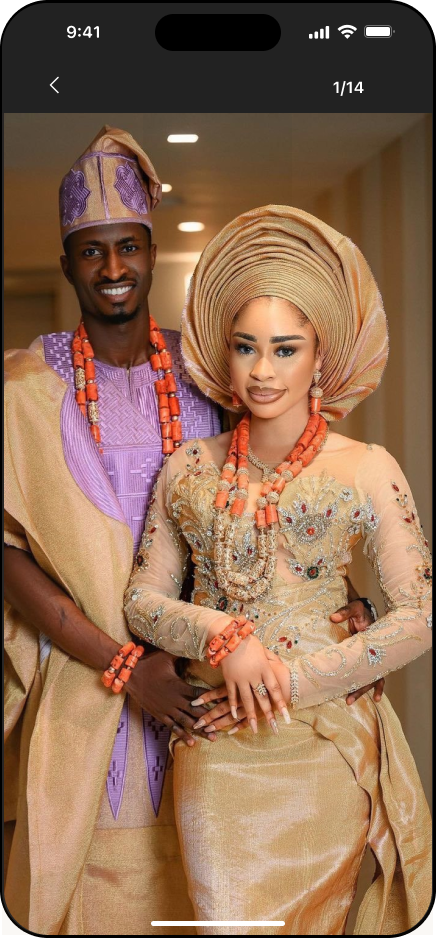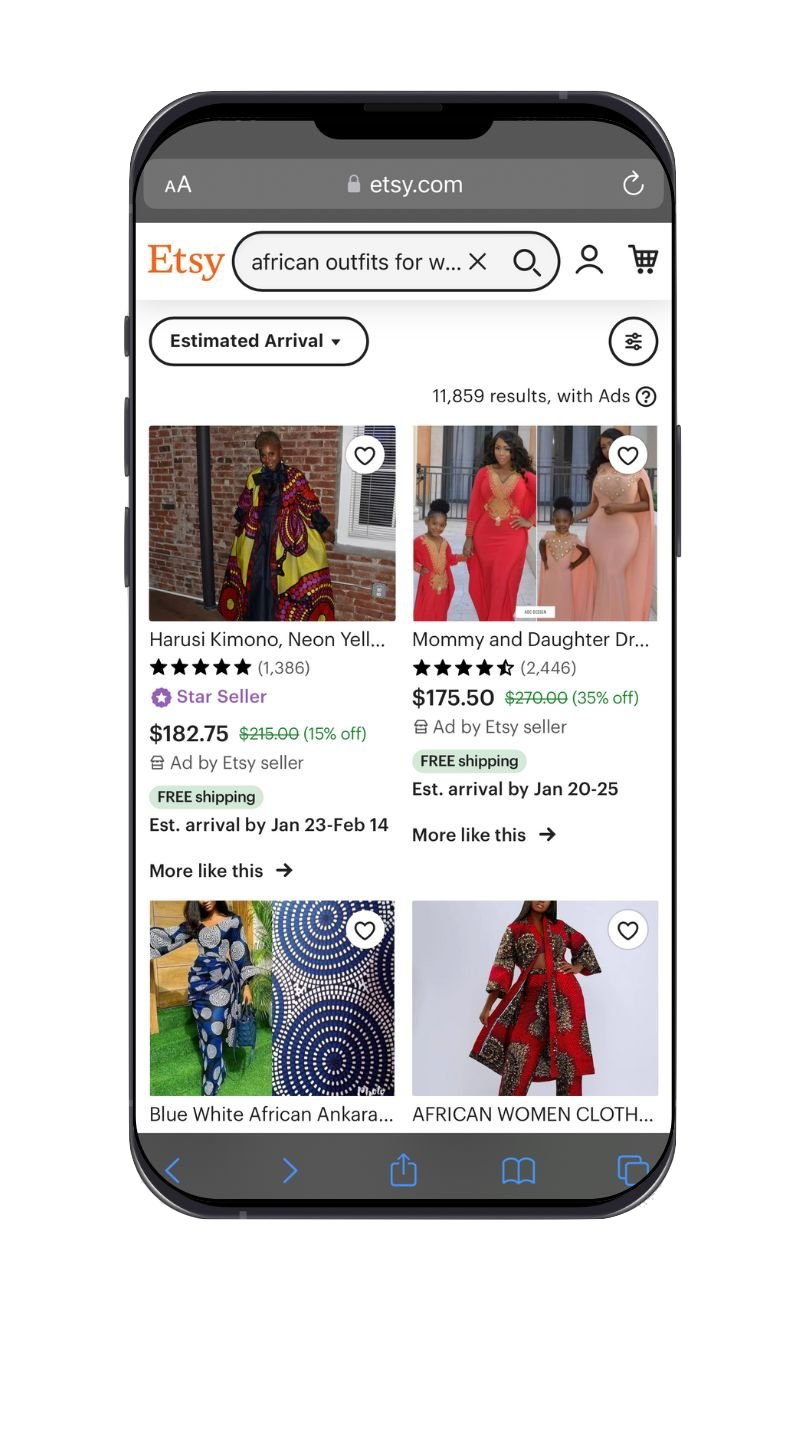Background
Growing up, as a first generation Ghanaian American, I would often get custom garments sewn for various occasions.
Depending on the event, sometimes we’d coordinate using the same fabric and dress codes.
Besides the richness of the fabric, what I love about creating bespoke garments is you’re able to add your own personal flair and never worry that you’ll show up to an event with the same outfit as another guest!
Business Opportunity
As of 2022, African immigrants make up almost 2M of the 4.6M Black Immigrant population with potential to double by 2060.
580,000 are from Ghana and Nigeria, communities that strongly embrace their cultures and are widely known for lavish Wedding Celebrations and colorful fabrics.
Source: Pew Research, People Mag
Problem
The problem is that people within the African diaspora have a difficult time finding trustworthy seamstresses due to technology constraints and lack of verified sources.
Solution
Design a digital directory for users to find vetted seamstresses
Design Process
I followed the design thinking framework for this project. Initially, I assumed this concept was something that needed to be on the market based on my own personal experience. During the discovery phase, I was able to find an existing proof of concept and conduct further research to validate the concept with user interviews and understand their pain points and core needs
User Interviews
The interview sample took into account women between 18 - 45, based in the US and of African Descent. I arranged 6 interviews about 30 minutes each and asked questions about their dressmaking process and experiences.
I asked:
What led you to begin your search for a seamstress?
How did you find your seamstress?
Did you experience any issues during the dressmaking process?
How did you communicate with your seamstress?
How could your experience have been improved?
Defining the User
Most of the interview participants were of african descent and worked in the tech or health profession and were often either brides or guests at an upcoming event. This led me to define 2 core users.
Identifying User Needs
Trust was a huge concern for the interview participants, so I deduced to address this factor, information about the seamstress including their experience, skills, portfolio and reviews will add more social proof and ease customers.
Competitive Analysis
Direct Competitor
There is nothing currently existing in the market with this concept. I did come across Tailoring Needs (defunct), another company also help clienting find the nearest custom-wear Fashion Designers.
This provides a proof of concept and they were able to solve a much needed problem within the african community, garnering over 5k followers.
I was able to interview a few seamstresses on their experiences with the platform and a main point of concern included customers having to pay to find the seamstress.
This could be a contributing factor to why it’s now defunct. Forcing customers to pay for the platform would be a deterrent to using it especially because of the expected fee of paying the seamstress.
Indirect Competitors
Because there are no existing competitors, I searched for indirect competitors with similar capabilities where one could potentially find a seamstress. Though all 3 have search functionality, the ease of use and searchability to find a seamstress was subpar.
Instagram is not conducive to searching as you’ll have to use hashtags which are often populated with other relevant posts.
Google would be the first place to search for a seamstress however many are not registered. A search yields 1-2 pages of results which were mixed with other businesses. With a combined population of 33,000 Nigerian & Ghanaian immigrants, we can assume this does not accurately reflect the number of seamstresses in DTX.
Etsy offers keyword suggestions when searching but most of the vendors do not provide bespoke services. The african fashion items are primarily ready to wear. Lastly, the risk level involved with purchasing from an online vendor is too high.
Upon further research, I discovered a few retail companies that were also indirect competitors, mostly offering ready to wear.
The few focused on personalization or bespoke services were not targeting African fashion.
An amazon search for “african fashion” yields 10,000 search results for ready to wear attire.
Seamstrust’s concept merging african fashion and personalization is another huge business opportunity as sustainability continues to be a focus and personalization gains more popularity.
User Journey
Wireframes
Hi Fidelity Mockups








Prototype
Video Walkthrough
















